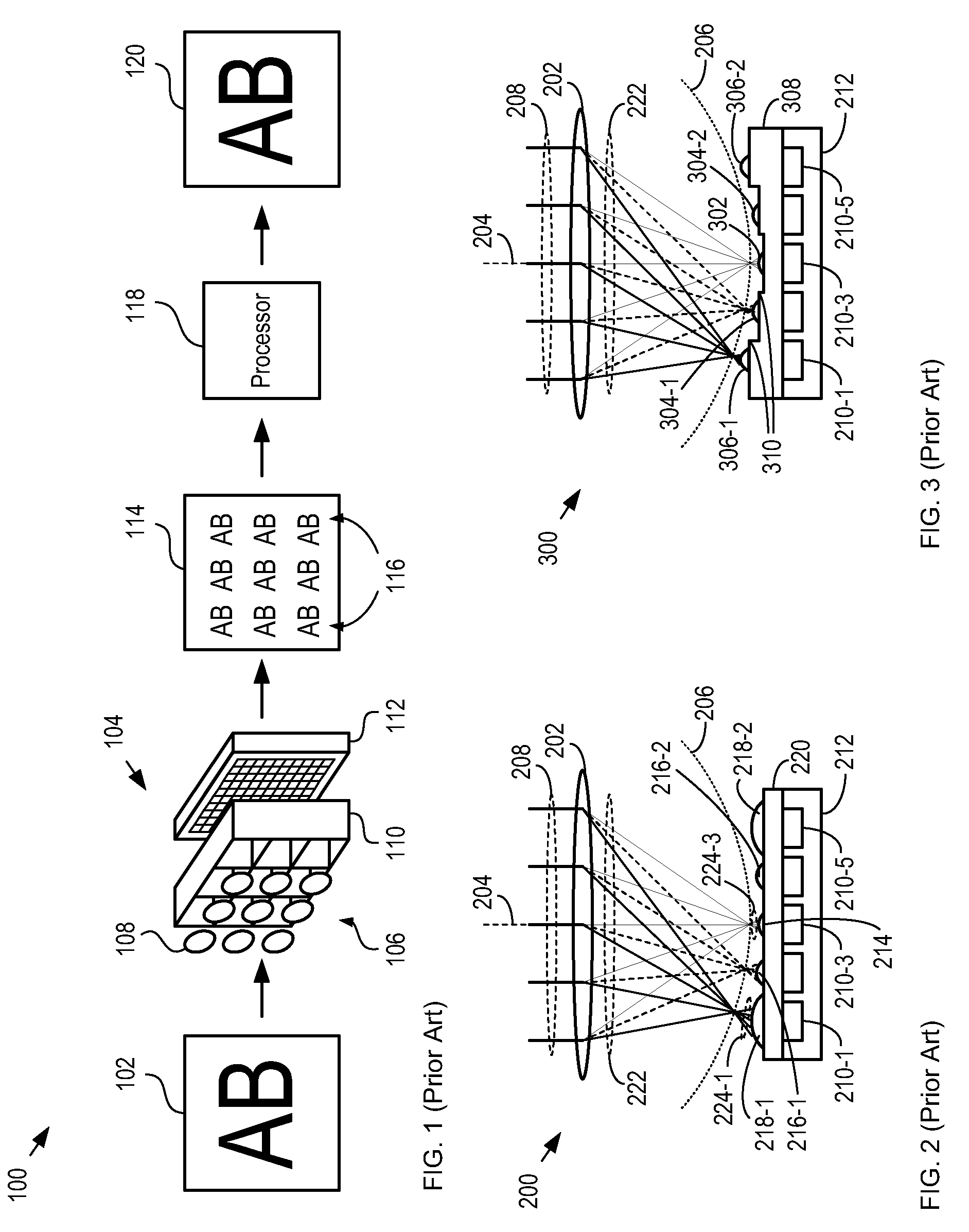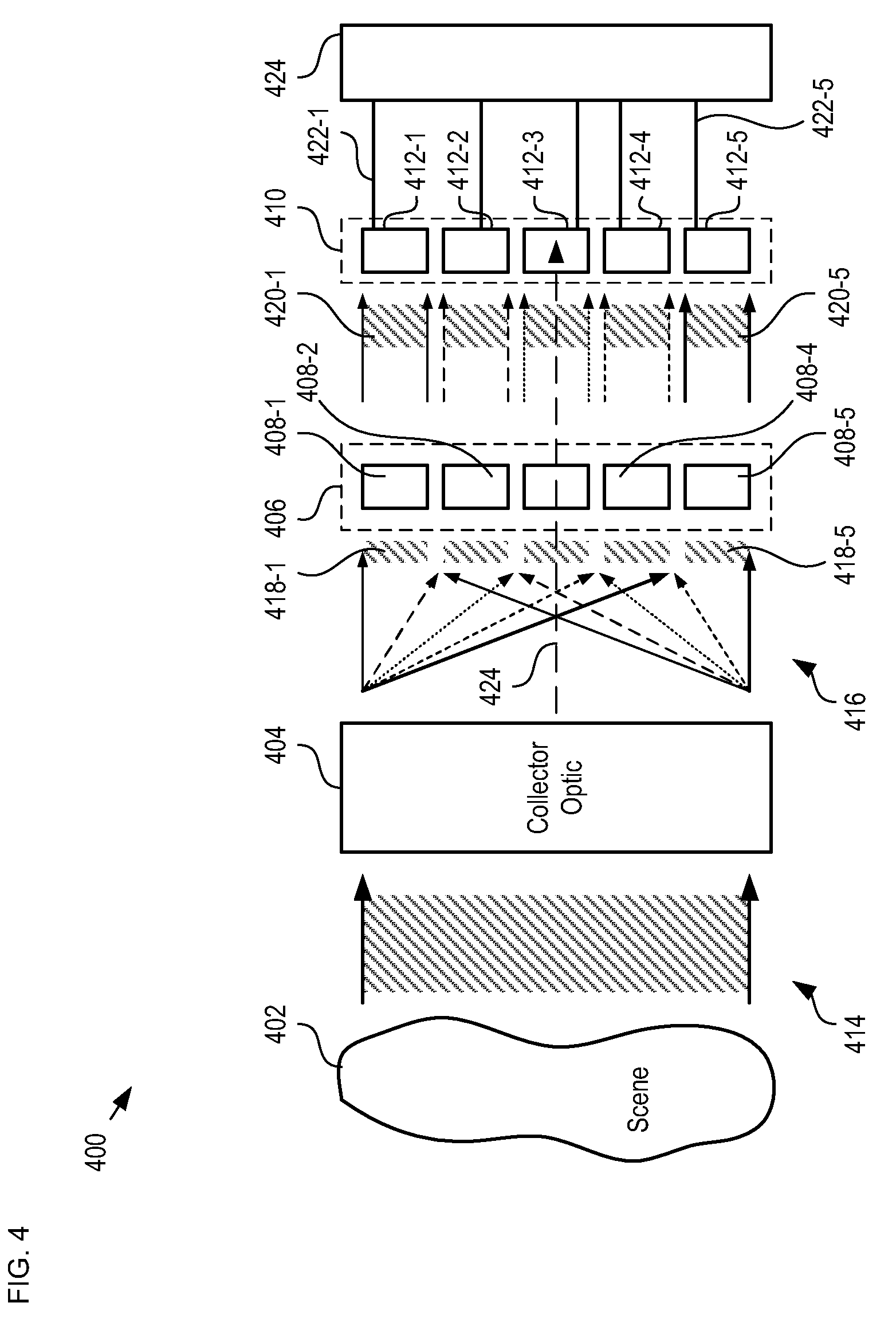Multiscale Optical System
a multi-scale optical system and optical system technology, applied in the field of imaging optics, can solve the problems of reducing system volume, angular resolution and number of resolvable object points, and affecting the optical performance of optical systems, so as to improve optical image resolution, lower cost lens systems, and the effect of improving the resolution of optical images
- Summary
- Abstract
- Description
- Claims
- Application Information
AI Technical Summary
Benefits of technology
Problems solved by technology
Method used
Image
Examples
Embodiment Construction
[0030]FIG. 1 depicts a first imaging system in accordance with the prior art. System 100 is an integrated computational imaging system that utilizes a multi-lens array and a reconstruction algorithm to provide high-resolution over a wide field-of-view. System 100 comprises imager 104, and processor 118.
[0031]Imager 104 is a Thin Observation Module by Bound Optics (TOMBO) imager that receives an optical field from scene 102. Imager 104 comprises lens array 106, separation layer 110, and photodetector array 112.
[0032]Lens array 106 comprises a two-dimensional array of substantially identical lenses 108. Each lens 108 in lens array 106 and its corresponding array of photodetectors forms a different imaging unit. Separation layer 110 comprises partitions that mitigate optical crosstalk between the imaging units.
[0033]In operation, imager 104 provides intermediate image 114. Intermediate image 114 comprises a plurality of images 116, each of which is a copy of a low-resolution image of s...
PUM
 Login to View More
Login to View More Abstract
Description
Claims
Application Information
 Login to View More
Login to View More - R&D
- Intellectual Property
- Life Sciences
- Materials
- Tech Scout
- Unparalleled Data Quality
- Higher Quality Content
- 60% Fewer Hallucinations
Browse by: Latest US Patents, China's latest patents, Technical Efficacy Thesaurus, Application Domain, Technology Topic, Popular Technical Reports.
© 2025 PatSnap. All rights reserved.Legal|Privacy policy|Modern Slavery Act Transparency Statement|Sitemap|About US| Contact US: help@patsnap.com



